
Despite over $9 billion spent on conservation efforts in the Columbia River Basin over four decades, research from Oregon State University reveals no improvement in wild salmon and steelhead stocks. While hatchery-reared salmon numbers have risen, the abundance of wild, naturally spawning fish has not seen a net increase, with issues from hydropower, overharvesting, and other human activities compounding the problem.
Over $9 billion in inflation-adjusted tax dollars spent on conservation over four decades has not resulted in a notable increase in wild salmon and steelhead populations in the Columbia River Basin, reveals a study from Oregon State University.
The research, led by William Jaeger from the OSU College of Agricultural Sciences, analyzed 50 years of data. It suggests that although the numbers of hatchery-reared salmon have risen, there is no indication of net growth in the wild, naturally spawning salmon and steelhead populations.
The findings were recently published in the journal PLOS One.
Jaeger, a professor of applied economics, notes that steelhead and Chinook, coho, and sockeye salmon numbers have been under heavy pressure in the Columbia River Basin for more than a century and a half – initially from overharvesting, then from hydropower beginning in 1938 with the opening of Bonneville Dam, the lowermost dam on the mainstem Columbia.
“Also, farming, logging, mining, and irrigation caused landscape changes and habitat degradation, which compounded the problems for the fish,” said Jaeger, who collaborated on the paper with Mark Scheuerell, a biologist with the U.S. Geological Survey and the University of Washington.
An estimated 16 million salmon and steelhead once returned from the Pacific to the portions of the basin above Bonneville Dam, but by the 1970s there were fewer than 1 million fish, prompting the federal government to intervene.
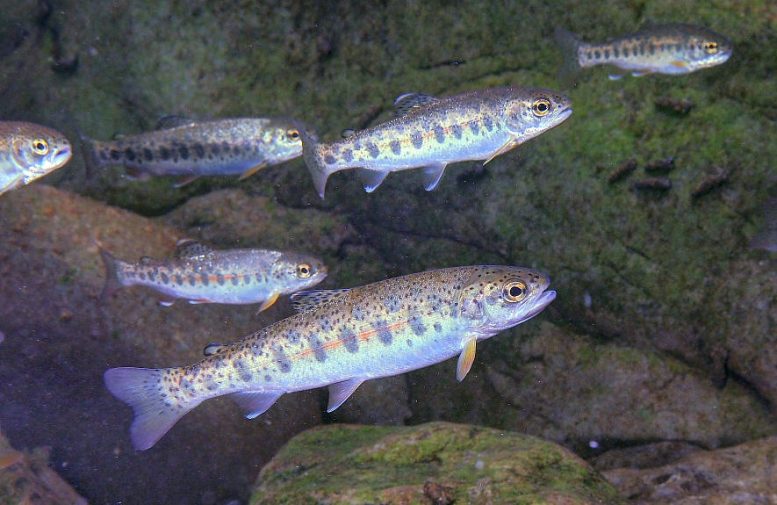
Juvenile steelhead trout in a natural stream environment. Credit: John McMillan
The Northwest Power Act of 1980 required fish and wildlife goals to be considered in addition to power generation and other objectives. The act created the Northwest Power and Conservation Council to set up conservation programs financed by Bonneville Power Administration revenues.
The cost and scale of restoration efforts grew considerably in the 1990s, Jaeger said, following the listing of 12 Columbia River runs of salmon and steelhead as threatened or endangered under the Endangered Species Act.
The public’s tab for conservation spending now exceeds $9 billion in inflation-adjusted 2020 U.S. dollars, the researchers said, which does not take into account all monies that have been spent by local governments and non-governmental agencies.
“The actual impact of all of these efforts has always been poorly understood,” Jaeger said. “Lots of people have long been concerned about a lack of evidence of salmon and steelhead recovery. One of the issues is that most studies evaluating restoration efforts have examined individual projects for specific species, life stages, or geographic areas, which limits the ability to make broad inferences at the basin level.”
Thus, Jaeger notes, a key question has persisted, and its answer is critical for sound policy and legal decisions: Is there any evidence of an overall boost in wild fish abundance that can be linked to the totality of the recovery efforts?
Based on a half-century of fish return data at Bonneville Dam, the single entry point to the basin above the dam, the evidence does not support a yes answer.
“We found no evidence in the data that the restoration spending is associated with a net increase in wild fish abundance,” Jaeger said.
He said the Northwest Power and Conservation Council set a goal of increasing total salmon and steelhead abundance in the basin to 5 million fish by 2025, but annual adult returns at Bonneville Dam averaged less than 1.5 million in the 2010s.
And while hatchery production has helped with overall numbers of adult fish, Jaeger added, it has also adversely affected wild stocks through a range of mechanisms including genetics, disease, competition for habitat and food, and predation on wild fish by hatchery fish.
“The role of hatcheries in recovery plans is controversial for many reasons, but results do indicate that hatchery production combined with restoration spending is associated with increases in returning adult fish,” Jaeger said. “However, we found that adult returns attributable to spending and hatchery releases combined do not exceed what we can attribute to hatcheries alone. We looked at ocean conditions and other environmental variables, hatchery releases, survival rates for hatchery released fish, and conservation spending, and we saw no indication of a positive net effect for wild fish.”
Even expenditures on “durable” habitat improvements designed to cumulatively benefit naturally spawning wild salmon and steelhead over many years did not lead to evidence of a return on these investments, he added.
Reference: “Return(s) on investment: Restoration spending in the Columbia River Basin and increased abundance of salmon and steelhead” by William K. Jaeger and Mark D. Scheuerell, 28 July 2023, PLOS ONE.
DOI: 10.1371/journal.pone.0289246

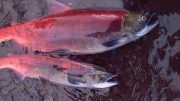
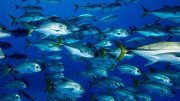
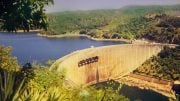
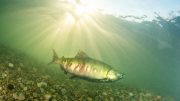

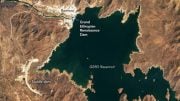
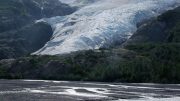

Where to start is the big issue, first off the rapidly declining salmon population in recent years can be related to several big issues and none have to do with global warming.
First is the plastic pollution in our oceans and rivers, second would be huge corporate Trawler ships devastating whole schools of salmon and even young Orcas,10 of them killed that we know about this year by the Trawlers out of Seattle. These fish are killed by the tons literally tons and thrown back dead as bycatch by these Trawlers. They will kill more fish in one accidental bycatch than sports fisherman are allowed to keep each season.These commercial Trawlers devastate whole runs of salmon in one fell swoop. More than all the natives and sports fishing industry is allowed to keep. You want to know why the fish are disappearing then start with them. These Trawlers devastate all marine fisheries up and down the west coast and they wipe out sea otters, seals, and sealing as Bycatch and are never held accountable. Every skipper that destroys these fish runs need to have their names shared with the public so people will know who is slaughtering our fisheries.
The value the improved wild salmon can fit into inflation, core values, and simple morale boost to all out door enthusiasts, whom each contributing to mills spent on basin improvements and entertainment.look back at all things good, and yes we can heal the earth, as the earth will heal us. Leave wild fish alone, and report all poachers! If commercial permits or not, no one should ever have a net casting device in or on the upper Clackamas river…. especially during wild fall coho runs! Truly an amazing site to see.
So I guess my question is: How many wild fish would we have if we hadn’t spent nine billion dollars? We couldn’t increase the numbers, fine, but did the money have an effect on maintaining what numbers we had? I know that the creeks of the Puget Sound are returning a small fraction of what they were 40 years ago, I’m wondering what the Columbia would have to offer without any mitigation efforts.
I think the bigger problem is certain people in the rivers and ocean are targeting these wild fish that sometimes takes several years to recover. Until the over harvesting stops and/or lack of food for these wild species increases,it won’t change.
Pinnepeds are a huge part of the problem on the Columbia and numerous other river systems.
Specifically on the Columbia they consume by the thousands below Bonneville. Surprised I saw zero mention of that….
What are they doing about pollution from the snake river.
i call bs on the way that you handled the salmon and steelhead runs. i called it and im not a sycic. but have 50 years exp. in ak and ore as a commercial and sport fisherman .
If you look at the data regarding salmon numbers in rivers in Alaska, it is clear that salmon numbers are steadily decreasing in rivers that have zero dams, meanwhile the numbers are stable and slightly increasing in the Columbia River basin. So without the 9 billion (that was funded by the hydroelectric revenues, not public tax dollars) then basically none of what you claim in the article is supported.
Ocean survival of outmigrating salmon fry and smolts is probably the biggest factor on salmon return. 3 years of La Niña/ colder ocean water has improved Coho,chinook and sockeye returns on the West Coast of Vancouver Island.Of course freshwater habitat is very important as low flows and logging decrease FW habitat.Not looking forward to anticipated El Niño weather events.
Any moron with a brain would not need a decades long study to see this. The fact is commercial ships based in the states are the largest problem that no one wants to talk about and even those are regulated. However the massive factory fishing ships sitting just off the coast in international waters being run by China are not regulated and take as much as they catch. This is the problem spend a billion sinking these illegal fishing vessels off the coast and the salmon will bounce back. Shows the governments stupidity just like the war on drugs. If u don’t attack the source all u are doing is throwing money away.
The US Coast Guard regulates fishing in the 200 mile wide economic zone around CA,OR, WA, and Alaska, including the Aleutian Island chain. My neighbor in CA was captain of a USCG cutter that ran three months enforcement tours in the North Pacific.
100% over fished tribal members, commercial.
And illegal. Should have spent the money paying them all not to fish and stopping illegal.
Forever Chemicals, over 9k different synthetic compounds, having been released starting in the 1930s. Interferes with Endocrine function in ALL living things. Now found in every drop of water literally everywhere on the planet, including Antarctic ice, top of Mount Everest, etc. Quite possibly the biggest ignored, obfuscated, and just plain hidden truth behind the 6th M.E.E. Not to mention the gender confusion, sexuality differences and divergences, mental problems, physical illnesses, reproductive disorders, hormone and neurotransmitter issues. Causing behavioral, emotional, bodily dysfunctions, cancers, tumors, autoimmune diseases, and the list goes on & on. The living things, namely all flora and fauna, especially humans – although we shouldn’t be so egotistical about our so called place in the cosmos let alone planet, will be reaping an hellfire of a whorlwind for centuries to come. Since we failed to fully understand the possible adverse effects of deploying such amazing products, toxins, poisons, and industrial wastes BEFORE actually putting them into use, bringing them to market, and focusing ONLY on short term profits, creature comforts, etc. So, why is this not more studies, discussed, or brought out into the light of day? On purpose, massive liability. People feel like they’ve been phukked’over, endless lawsuits, and outcries for harm reduction would all run amok… as if we don’t already have enough discord, unrest, madness, existential dread, mistrust of govt & corp institutions, structures, and systems. Cognitive Dissonance rules the day. Especially for those whom lack any background in even the slightest understanding or respect for Biology!
Sorry to offend OSU ideologs, but consider the source here. OSU invented the monoculture fir business and will sling bs forever to protect it .
Most trace chemicals take longer to have adverse effects in wildlife than their normal lifespans. The Rocky Mountain Arsenal in Denver manufactured nerve gas and pesticides. Yet it had a thriving population of wildlife, and was made a national wildlife refuge by Congress.
Go fish the Columbia River during the salmon run. It will not take long anchored up you’ll come to realize the problem on the Columbia River. Over population of seal lions in the river systems which are not their natural habitat. Eliminate the over population of sea lions in fresh water tributaries will give salmon and STURGEON a much higher chance at survival bringing the population back up in numbers. Restricting sport fishing these past 20 years had no signifant effect when it’s obvious they’re not the problem. Go anchor your boat up above the fishery two weeks after mothers Day and you’ll get great video footage of tag team sea lions bringing the breeder over size Sturgeon to the surface and tear them apart which in the long run won’t be any reproducing aged Sturgeon in the river and once again the fish and game instead of dealing with the real issue will eliminate sport fishing. Sadly my grandchildren will only be able to watch fishing shows in the near future with the current Fish and Wildlife running operations.
That was never the main goal. Splashing money around to favored researchers, academics and politicians was the primary mission. Most of the boondoggles have similar results.
The Washington tribes have guaranteed fishing rights under the treaties of 1855 on the Columbia River and coastal waters. They have no restrictions on the number of fish they take. They used successfully to force Washington State to replace all culverts under roads crossing streams to improve salmon spawning. But the tribes don’t limit their take of fish in order to enhance salmon breeding. Their treaty rights preempt the Endangered Species Act. They want everyone else to make sacrifices to support their unlimited take of salmon. The sea lions are protected under the Marine Mammal Protection Act, but are having an unhistorical spree predating on salmon. Wild salmon are surviving, which is all the Endangered Species Act requires. The actual numbers of salmon are being sustained by hatchery salmon. The laws are being satisfied. There is no reason to take drastic measures to try to create some kind of ideal salmon run of only wild fish.
all that money was spent lining pockets and creating personal fiefdoms.
Leave it to the Democratic party.